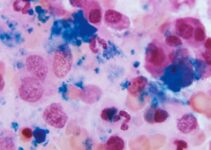Researchers at the University of Missouri are proposing changes to how water quality and waterways in America are protected, saying current laws are not adequate.

Chlorinated Water
The US Clean Water Act has led the way in the drive to ensure safe drinking water and clean waterways across the country over the years. It is backed by other laws, such as the Safe Drinking Water Act and the Waters of the United States rule.
Read Also: Pollution: Aerosol Air Fresheners Harmful to Health and the Environment
However, researchers report in Ecology Law Quarterly that these extant laws are not sufficient to protect against all types of pollution. They do little, in particular, to safeguard against what is called “nonpoint source pollution.”
“Since the Clean Water Act was written, there was always a recognition that nonpoint pollution is a problem,” said study co-author Robin Rotman, an assistant professor in the School of Natural Resources at the University of Missouri.
In spite of this recognition, however, not enough is currently being done to guard against this type of pollution. This needs to change, according to researchers.
Promoting safer water and waterways
An incident on the Cuyahoga River in 1969 contributed in some way to the advent of the US Clean Water Act. The river located close to Cleveland became so polluted to the extent of catching fire. That incident sparked a movement that would lead to the introduction of the regulations three years afterward.
Read Also: Environmental Pollution Contributes to Antibiotic Resistance According to Study
Since its emergence, the Clean Water Act has helped to control many clear causes of pollution, such as wastewater dumping. But it has failed to make much difference in the regulation of more diffuse, less evident pollution types.
Nonpoint source pollution is a major type that existing laws have not done much to curb. This refers to toxic waste that enters into waterways indirectly rather than being poured in bulk at a particular point. It subsumes farmland runoff and urban stormwater.
“Large amounts of nitrates and nitrites, such as those found in fertilizer, can cause negative health effects such as blue baby syndrome,” Rotman said. “Nonpoint source pollution can lead to toxic algae blooms; pesticides and herbicides also contain carcinogens that can threaten human health.”
The researchers said this type of pollution constitutes a major environmental threat to drinking water across America.
Read Also: Study Finds Link Between Air Pollution and Gastrointestinal Disorders
Need for a change
Rotman and her colleagues decided to study current laws in preparation for the marking of the 50th anniversary of the Clean Water Act next year. They wanted to identify risky gaps in legislation and see what could be done better.
It was observed that extant legislation was too narrow in terms of pollution types that they target. Current laws mostly focus on obvious polluters, such as wastewater pipes, and are largely concerned with regulating specific areas (for example, wetlands). These regulations essentially have different goals and, in some cases, specific jurisdictions.
The research team proposes an amendment of the Clean Water Act to mandate states to control nonpoint source pollution. It also calls for federal funding to be made available to support state and local initiatives geared toward this.
Read Also: Mount Sinai’s Study: Prenatal Air Pollution Exposure Could Impact Infants’ Heart Stress Response
In addition, researchers want an extension of the Safe Drinking Water Act to safeguard rural water sources. They want the maximum levels stipulated for 87 potentially hazardous contaminants to apply to lakes, rivers, and other water sources regulated by the Clean Water Act.
Rotman and her colleagues also want citizens to be made aware of nonpoint source pollution so they can take better care of local water sources.
The team said it could prove more costly if necessary changes to legislation are not made promptly. Many municipalities will be forced to invest more money in systems to improve drinking water quality. These costs would, of course, be passed to the public as higher bills.
It is particularly important to pay more attention to nonpoint source pollution in the “Great Plains states” where agriculture plays a prominent role, the researchers said.
Read Also: Possible Consequences of Global Overpopulation on the Environment and Global Resources
References
Realigning the Clean Water Act: Comprehensive Treatment of Nonpoint Source Pollution
FEEDBACK:



